You are standing perfectly still and then you take a step forward. Before the step your momentum was zero, but afterward you have some momentum. Is the principle of conservation of momentum violated in this case?
To determine whether the principle of conservation of momentum is violated when you take a step forward while standing still, we can analyze the situation step by step.
Step 1: Understanding Initial Momentum
Before you take a step, you are standing still. In this state, your momentum is zero because momentum (p) is defined as the product of mass (m) and velocity (v):
p=m⋅v
Since your velocity is zero, your momentum is also zero.
Step 2: Taking a Step Forward
When you take a step forward, you begin to move. This means you now have a non-zero velocity, and consequently, your momentum becomes non-zero:
pperson=mperson⋅vperson
Here, mperson is your mass and vperson is your velocity after taking the step.
Step 3: Considering the Earth
While you are moving, it is important to remember that the Earth is also moving. The Earth has a very large mass and is in motion, which means it also has momentum:
pearth=mearth⋅vearth
Even though the Earth's velocity is very small compared to yours, it still contributes to the total momentum of the system.
Step 4: Conservation of Momentum
The principle of conservation of momentum states that in an isolated system, the total momentum before an event must equal the total momentum after the event. In this case, the system includes both you and the Earth.
Before you take a step, the total momentum of the system (you + Earth) is:
ptotal,initial=0+pearth
After you take a step, the total momentum becomes:
ptotal,final=pperson+p′earth
Where p′earth is the momentum of the Earth after you take the step.
Step 5: Analyzing Changes in Momentum
When you step forward, you exert a force on the Earth in the opposite direction (according to Newton's third law). This results in a change in the Earth's momentum, albeit very small due to its large mass. Therefore, the total momentum of the system remains conserved:
ptotal,initial=ptotal,final
Conclusion
Thus, the principle of conservation of momentum is not violated when you take a step forward. The momentum you gain is balanced by a corresponding change in the Earth's momentum, ensuring that the total momentum of the system remains constant.
---
Before you take a step, you are standing still. In this state, your momentum is zero because momentum (p) is defined as the product of mass (m) and velocity (v):
p=m⋅v
Since your velocity is zero, your momentum is also zero.
When you take a step forward, you begin to move. This means you now have a non-zero velocity, and consequently, your momentum becomes non-zero:
pperson=mperson⋅vperson
Here, mperson is your mass and vperson is your velocity after taking the step.
While you are moving, it is important to remember that the Earth is also moving. The Earth has a very large mass and is in motion, which means it also has momentum:
pearth=mearth⋅vearth
Even though the Earth's velocity is very small compared to yours, it still contributes to the total momentum of the system.
The principle of conservation of momentum states that in an isolated system, the total momentum before an event must equal the total momentum after the event. In this case, the system includes both you and the Earth.
ptotal,initial=0+pearth
After you take a step, the total momentum becomes:
ptotal,final=pperson+p′earth
Where p′earth is the momentum of the Earth after you take the step.
When you step forward, you exert a force on the Earth in the opposite direction (according to Newton's third law). This results in a change in the Earth's momentum, albeit very small due to its large mass. Therefore, the total momentum of the system remains conserved:
ptotal,initial=ptotal,final
Thus, the principle of conservation of momentum is not violated when you take a step forward. The momentum you gain is balanced by a corresponding change in the Earth's momentum, ensuring that the total momentum of the system remains constant.
Topper's Solved these Questions
- CENTRE OF MASSBOOK - CENGAGE PHYSICS ENGLISHCHAPTER - CENTRE OF MASSEXERCISE - Exercise 1.3
24 Videos
- CENTRE OF MASSBOOK - CENGAGE PHYSICS ENGLISHCHAPTER - CENTRE OF MASSEXERCISE - Subjective
23 Videos
- CENTRE OF MASSBOOK - CENGAGE PHYSICS ENGLISHCHAPTER - CENTRE OF MASSEXERCISE - Exercise 1.1
20 Videos
- CALORIMETRYBOOK - CENGAGE PHYSICS ENGLISHCHAPTER - CALORIMETRYEXERCISE - Solved Example
13 Videos
- DIMENSIONS & MEASUREMENTBOOK - CENGAGE PHYSICS ENGLISHCHAPTER - DIMENSIONS & MEASUREMENTEXERCISE - Integer
2 Videos
Similar Questions
Suppose a ball of mass m is thrown vertically upward with an initial speed v, its speed decreases continuously till it becomes zero. Thereafter, the ball beigns to fall downward and attains the speed v again before striking the ground. It implies that the magnitude of initial and final momentums of the ball are same. Yet, it is not an example of conservation of momentum. Explain why?
View SolutionAssertion : A bullet is fired from a rifle. If the rifle recoils freely, the kinetic energy of rifle is more than that of the bullet.
Reason : In the case of rifle bullet system the law of conservation of momentum violates.
View SolutionA bullet of mass 50g moving with velocity 600m/s hits block of mass 1.0kg placed on a rough horizontal ground and comes out of the block with a velocity of 400m/s. The coefficient of friction between the block and the ground is 0.25. Neglect loss of mass of the block as the bullet pierces through it.
(a) In spite of the fact that friction acts a an external force, can you apply principle of conservation of momentum during interaction of the ullet with the block?
(b) Find velocity of the block immediately after the bullet pierces through it. (c)FInd the distance the block will travel before it stops.

View SolutionA ballistic pendulum is a device that was used to measure the speeds of bullets before the development of electronic tiring, devices. The device consists of a large block of wood of mass M, hanging from two long cords. A bullet of mass m is fired into the block. the bullet comes quickly into rest and the block + bullet rises to a vertical distance h before the pendulum comes momentarily to rest as the ends of the arc. ltbr> In the process. the linear momentum is conserved. In such a collision. some kinetic energy is dissipated as heat: so mechanical energy is not conserved. When there is a loss in mechanical energy, the collision is said to be inelastic. Further when two bodies coalesce, the collision is said to be perfectly inelastic.
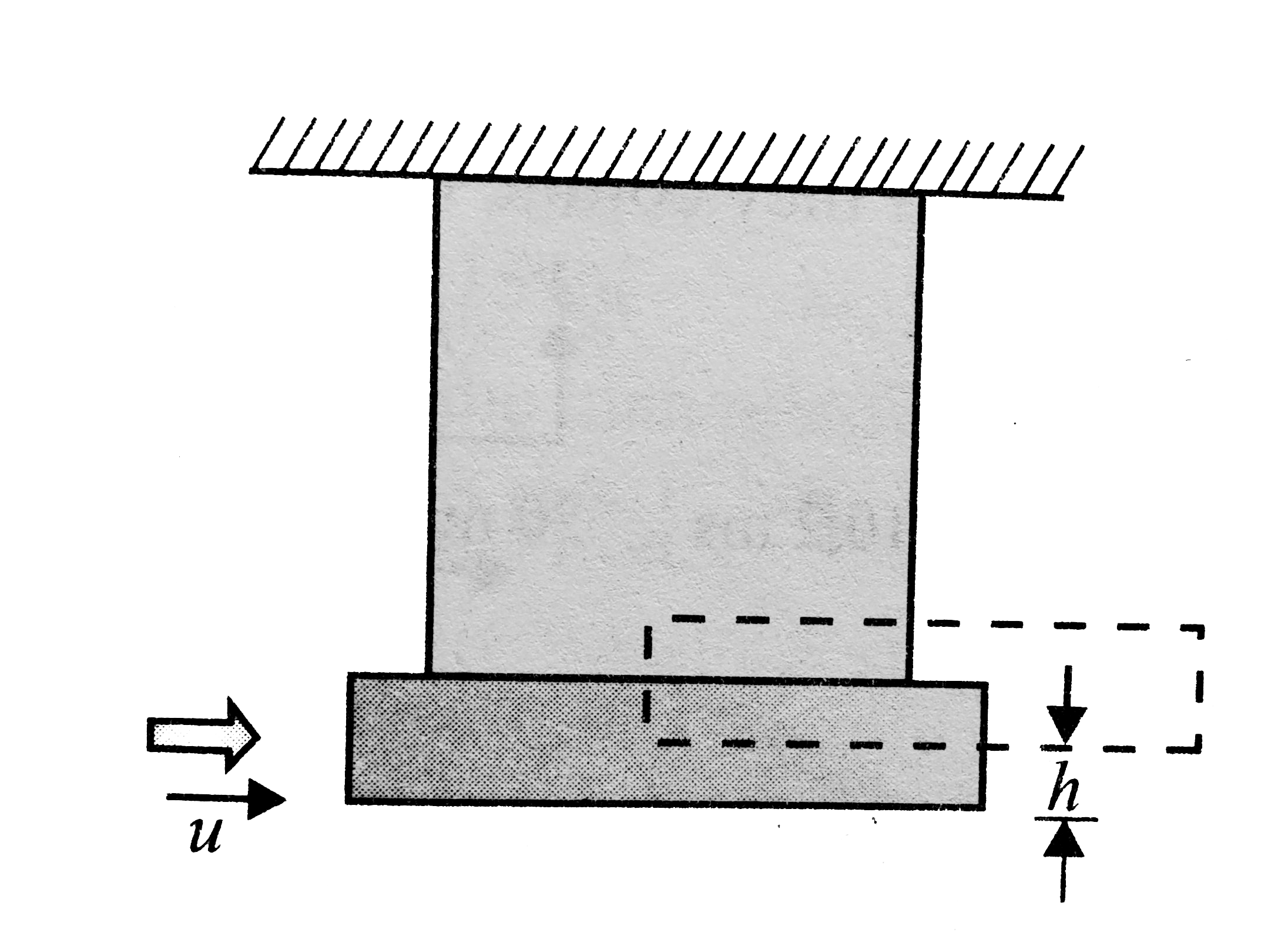
The energy dissipated as heat in the collision is
View SolutionA ballistic pendulum is a device that was used to measure the speeds of bullets before the development of electronic tiring, devices. The device consists of a large block of wood of mass M, hanging from two long cords. A bullet of mass m is fired into the block. the bullet comes quickly into rest and the block + bullet rises to a vertical distance h before the pendulum comes momentarily to rest as the ends of the arc. ltbr> In the process. the linear momentum is conserved. In such a collision. some kinetic energy is dissipated as heat: so mechanical energy is not conserved. When there is a loss in mechanical energy, the collision is said to be inelastic. Further when two bodies coalesce, the collision is said to be perfectly inelastic.
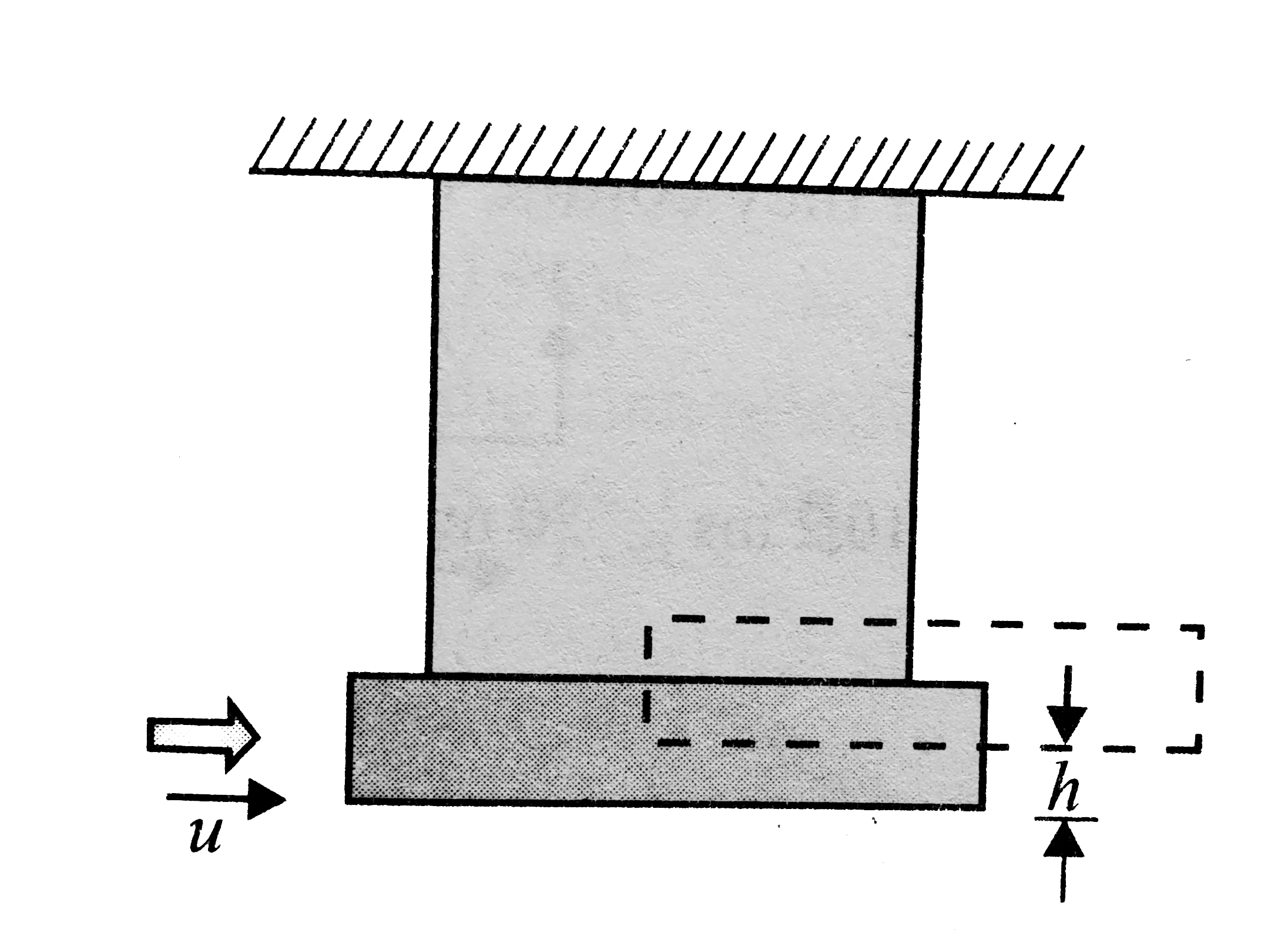
The collision of block-bullet system is
View SolutionA ballistic pendulum is a device that was used to measure the speeds of bullets before the development of electronic tiring, devices. The device consists of a large block of wood of mass M, hanging from two long cords. A bullet of mass m is fired into the block. the bullet comes quickly into rest and the block + bullet rises to a vertical distance h before the pendulum comes momentarily to rest as the ends of the arc. ltbr> In the process. the linear momentum is conserved. In such a collision. some kinetic energy is dissipated as heat: so mechanical energy is not conserved. When there is a loss in mechanical energy, the collision is said to be inelastic. Further when two bodies coalesce, the collision is said to be perfectly inelastic.
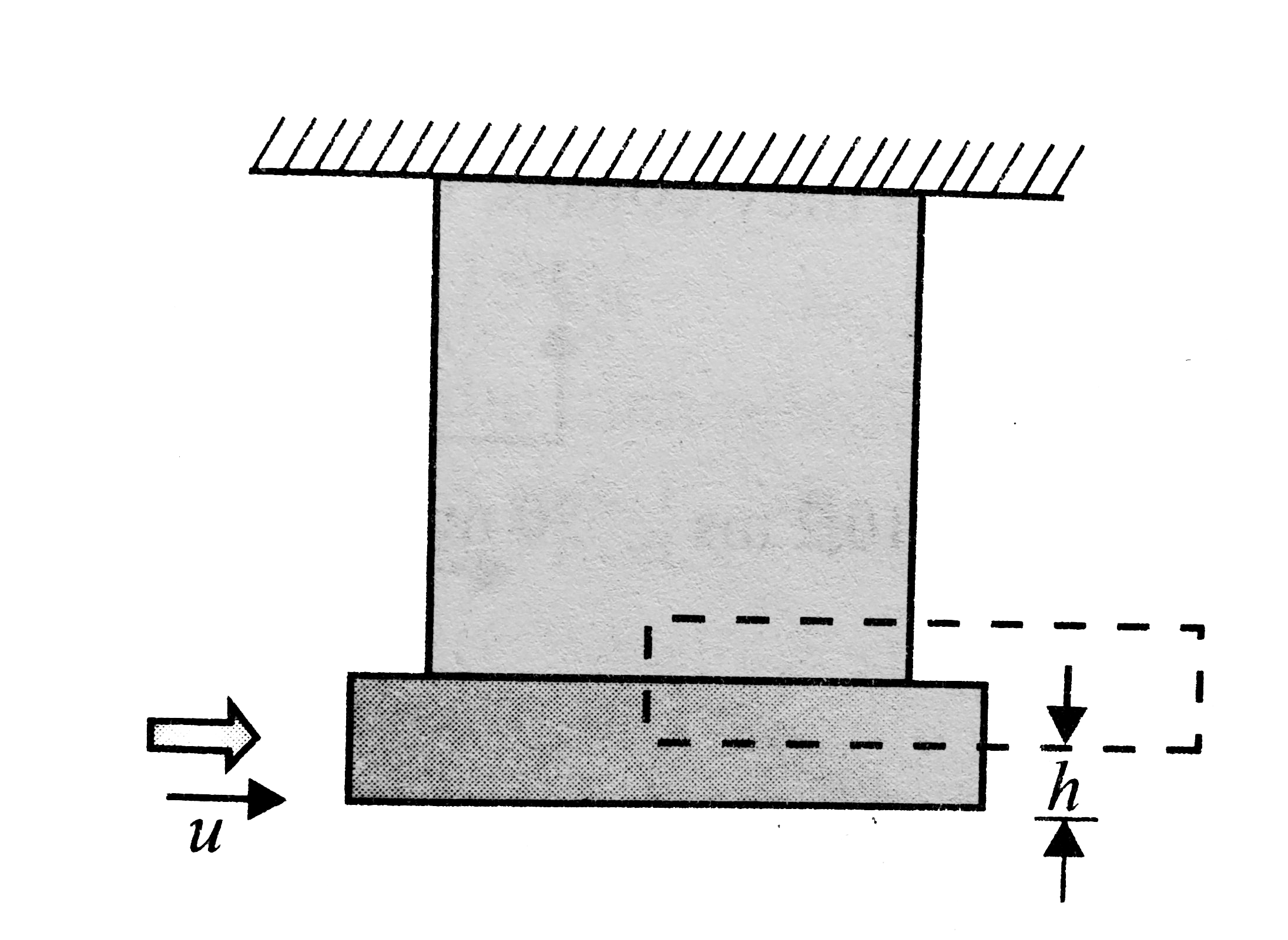
After collision what is the combined velocity of the bullet + block system?
View SolutionA ballistic pendulum is a device that was used to measure the speeds of bullets before the development of electronic tiring, devices. The device consists of a large block of wood of mass M, hanging from two long cords. A bullet of mass m is fired into the block. the bullet comes quickly into rest and the block + bullet rises to a vertical distance h before the pendulum comes momentarily to rest as the ends of the arc. ltbr> In the process. the linear momentum is conserved. In such a collision. some kinetic energy is dissipated as heat: so mechanical energy is not conserved. When there is a loss in mechanical energy, the collision is said to be inelastic. Further when two bodies coalesce, the collision is said to be perfectly inelastic.
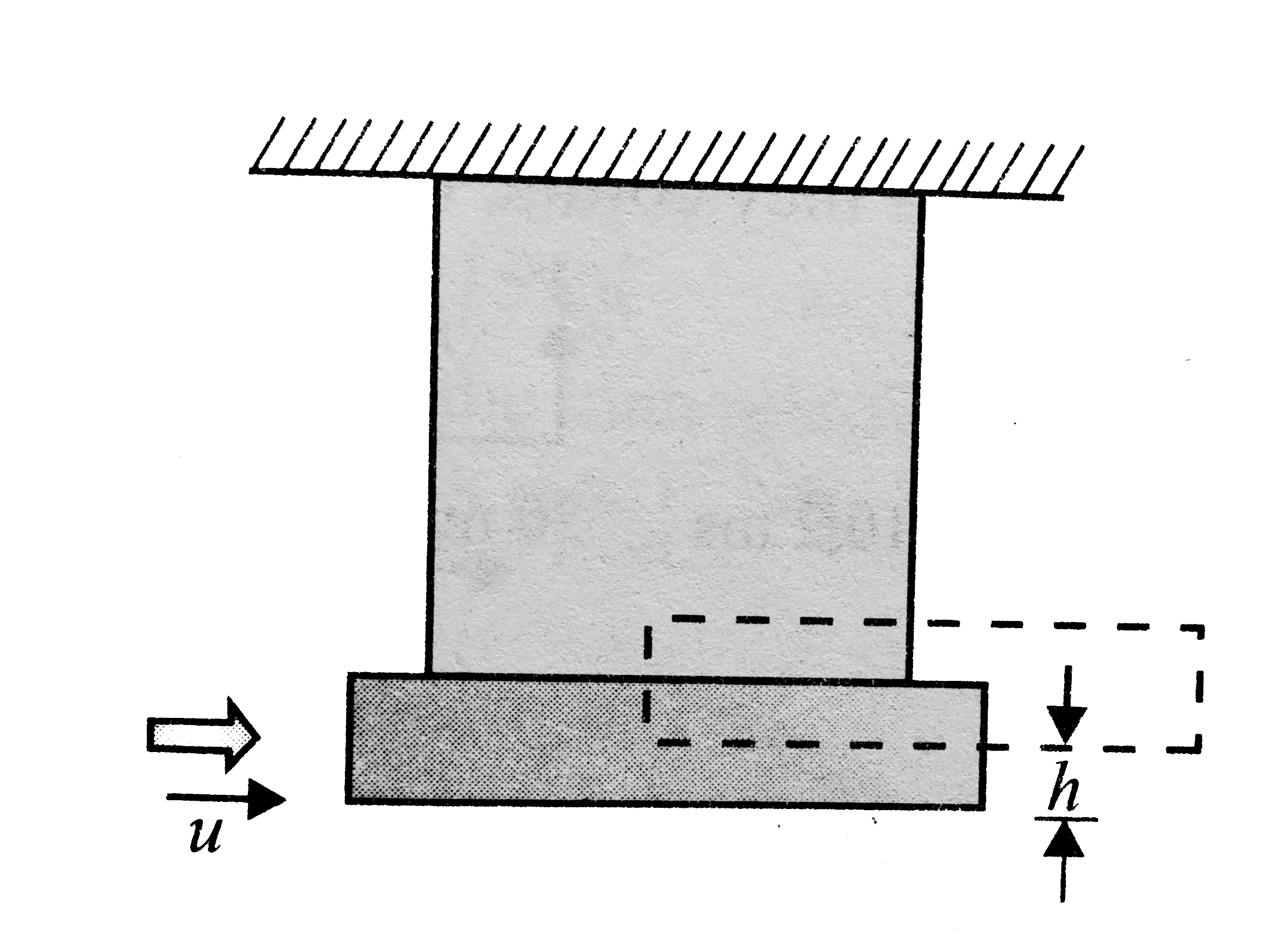
What is the initial speed of the bullet in terms of height h?
View SolutionSTATEMENT-1 : A person standing on a stationary trolley placed on rough ground walks for a moment and then stops. The system acquires a net velocity due to this.
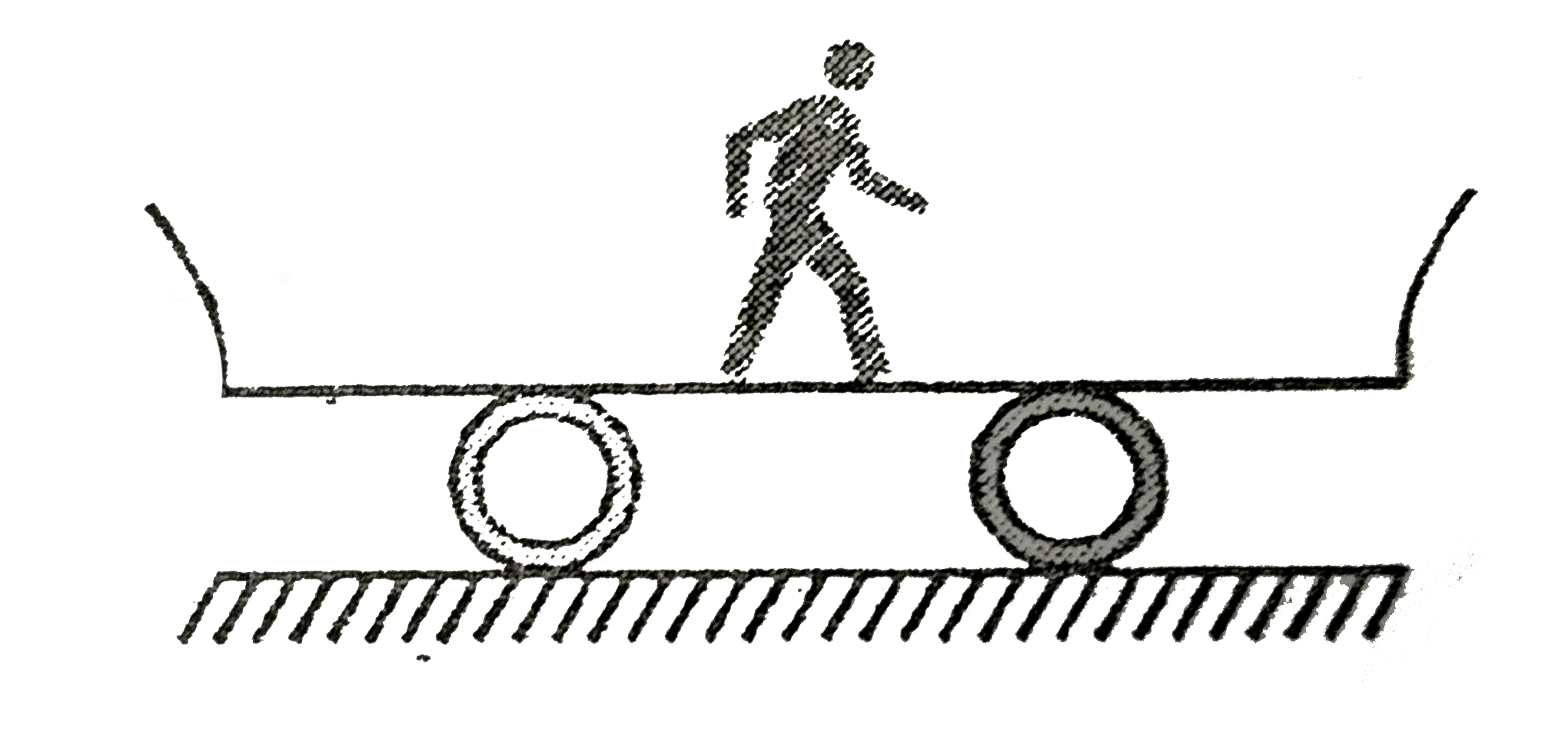
and
STATEMENT-2 : In the present situation, law of conservation of linear momentum is violated.
View SolutionA proton and an alpha particle are projected in a magnetic field which exists in the width of region d. Compare the angles of deviation suffered by the proton and the alpha particle if before entering the magnetic field both the particles.
a. have the same momentum,
b. have the same kinetic energy, and
c. are accelerated through the same potential difference. Take mα=4mp,qα=2qp.
View SolutionYou have identified a useful gene in bacteria. Make a flow chart of the steps that you would follow to trasnfer this gene to a plant.
View Solution
